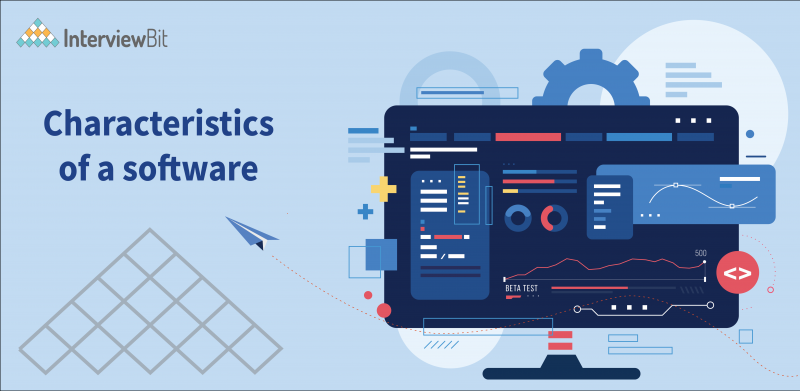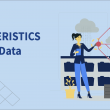Introduction
The term “Software Engineering” was first used in 1968 at the NATO Software Engineering Conference. Over time, it evolved into a business model where high-quality software can be produced cheaply, quickly, and with little maintenance. Now, software engineering has evolved into a fully-fledged engineering discipline recognized for its in-depth study and research. Software Engineering implies a number of things but, to truly understand it, you need to understand each element of the term. It generally comprises two words, i.e., Software + Engineering = Software Engineering.
- Software: Generally, the software is a collection of programming codes, procedures, rules, documents, and data that perform a particular task and fulfil a particular requirement. Software is never exhausted or worn out. In a computer system, software controls integrate and manage the hardware components.
- Engineering: Engineering is the process of designing and developing something (like machines, structures, software, etc.) using best practices, principles, and methods. An engineer uses information and standards (principles) to design, construct, and analyze software products.

What is Software Engineering?
Software engineering is the process of analyzing customer and business requirements and then designing, developing, building, and testing software applications to meet those requirements. The process focuses on the design, development, and improvement of software products using scientific standards, techniques, and methods. These result in effective and robust programming items or products. In the early days, software development was relatively simple, so software development was straightforward, but as technology improved, software became more complex and projects became more elaborate. A development team now had to be present, which could prepare detailed plans and designs, test them, devise intuitive user interfaces, and integrate everything into a system. An entirely new discipline emerged out of this new approach called software engineering.
- Software engineering provides methods for dealing with complexity within a software system, enabling the development of robust software systems that maximize productivity.
- It covers not only the technical aspects of software development but also the management activities, which include leading the team, budgeting, making schedules, etc.
- Software Engineering tools and methods (Risk Analysis, Data Collection, Project Tracking, CM Management, etc.) have been successfully applied to a wide range of applications.
Importance of Software Characteristics in Software Engineering
An engineer’s first consideration when creating any kind of software product is, “What are the characteristics of a good software product?” Well before we talk about Software characteristics, let’s look at what one can reasonably expect from any software.
Confused about your next job?
- First and foremost, a software product must satisfy the needs of the end-user as well as the business.
- Additionally, software development and maintenance should be affordable.
- Software development should be completed within the specified time frame.
Many software products are available on the market today that serve various industries. Often software developers focus on creating excellent products that work, but they forget to consider other aspects that can make a product extraordinary. Maybe you’re a software developer interested in developing or improving your product but not quite sure what makes a great one.
So, what you need is to incorporate fundamental characteristics of software into your software’s core functionality in order to have an outstanding product. Surely, you are now wondering what are the characteristics of Software. In order to make things easier for you, we’ve compiled a list of some of the top characteristics of software right here in this blog. Check out these software characteristics that can make your software product stand out and determine if you still lack any of them.
Top Characteristics of Software
The quality of a software product is determined by what it offers and how easily it can be used. Software is judged by different people on different grounds. Customers, for instance, want software that meets their specific needs. Similarly, developers engaged in designing, coding, and maintaining the software determine the quality of the software by assessing its internal characteristics. Let’s check them out…
1. Functionality
The functionality of software refers to its ability to perform and function according to design specifications. In simple terms, software systems should function correctly, i.e. perform all the functions for which they are designed.
The functions refer to the features that the end user, as well as the business, expect as basic facilities from the system. All these functions must be integrated into the system. Many software applications out there are designed for simplicity, but ultimately, the purpose of the software is to provide its users with the desired functionality. In order to look like the best software product, it must have a clear appearance, components, and functions. However, there are also those products out there that can provide a great deal of value for your money.
2. Usability (User-friendly)
The user-friendliness of the software is characterized by its ease of use. In other words, learning how to use the software should require less effort or time. Navigating the software is extremely important since it helps determine the journey the user takes within the software. This is imperative to ensure visitors remain on your website and have a positive experience, which leads to an increase in sales and brand loyalty.

An important indicator of a good piece of software is its user interface, i.e., the smooth flow of its design. A product with a great UI (User Interface) design is more likely to get noticed than one without. If a software program isn’t user-friendly, users may have trouble navigating the software and using some of its features. Software should require less time or effort to learn. Ideally, software should be easy to use even by people with no IT experience.
3. Efficiency
Essentially, it refers to the software’s ability to utilize human and system resources such as time, effort, CPU, memory, computation power, network bandwidth, files, databases, etc., as effectively and efficiently as possible. For a software project to succeed, efficiency is crucial. In addition to meeting the needs for which the software was made, it must also provide excellent features designed to assist users in completing their tasks faster. Software should make efficient use of storage space and execute commands according to timing requirements.
In order to be efficient, software must offer users proper value in terms of their time and cash. The market is filled with products that cater to various industries, but only a handful of products are efficient enough to benefit individuals and businesses. The medical billing software that Open Practice Solutions provides, for instance, makes billing processes much more efficient for clients than those offered by other companies.
4. Flexibility
Software Flexibility refers to the ability of the software solution to adapt to potential or future changes in its requirements. When evaluating the flexibility of software, look at how simple it is to add, modify, or remove features without interfering with the current operation.

It is essential to keep up with rapidly changing markets, technologies, and customer needs. In software development, change is inevitable; it can arise during the development process itself or as the result of future requirements. Flexibility is therefore highly valued. Consequently, any software product must be scalable, flexible, and easily adaptable to future technology. When designing or building a software product, be sure to plan for these changes that are inevitably going to occur. Loose coupling of components is the key to creating highly flexible systems.
5. Reliability
The reliability of a software product describes the likelihood it will operate without failure over a specified period of time under certain conditions. It determines the ability of software to maintain its level of performance (provide desired functionality) under specified conditions for a specified period of time. Generally speaking, software reliability is measured as the availability of the software. The value should not be less than 99%. In reliability testing, the goal is not perfection, but achieving a level of reliability that is acceptable before a software product is released to customers. MTTF, MTTR, MTBR, etc., are some reliability metrics that can be used to quantify the reliability of a software product.

It is regarded as one of the most important quality aspects of software quality, along with functionality, efficiency, maintainability, etc. Since software tends to be complex, it is hard to achieve software reliability.
6. Maintainability
Maintainability refers to how easily you can repair, improve and comprehend software code. In some ways, maintaining is similar to being flexible. Maintainability deals with the modification of errors and minor alterations to software code, while flexibility focuses on major functional extensions. It also involves maintaining the services and functionality of the software.
Most of the time, developers are not the ones who maintain the software. Therefore, good documentation is crucial, which includes code documentation, interface definitions, etc. The maintainability of software products is affected by the quality of the documentation. Typically, more than half of development budgets are spent on software maintenance. Maintenance should therefore be integrated into the development lifecycle for effective software maintenance.
7. Portability
Software portability is a critical factor that cannot be ignored. Portability refers to the ability to use software in different environments. This is the ease with which software can be ported from one platform to another without (or with minimal) changes, while obtaining similar results. As simple as it may sound, it refers to the ability of software to work on different hardware platforms without any (or little) modifications needed.
Furthermore, you should be aware that porting software to a new environment is comparatively cheaper than developing an equivalent application from scratch. There can be no doubt that portability is a crucial aspect of reducing development costs.
8. Integrity
There are multiple interpretations of software integrity. Some people tend to associate integrity with security, believing it is resistant to hacks and privacy violations. To others, high integrity means that the software cannot be modified without authorization.

Integrity is key for demonstrating the safety, security, and maintainability of your software. In addition, software that needs to be compliant with industry regulations and coding standards requires high code integrity. Achieving software integrity can be difficult. Yet, with the right practices to improve safety, security, and maintainability, the challenge can be easily overcome. In these days of increased security threats, all software must include this factor.
Conclusion
The process of software engineering begins with analyzing the needs of the users and culminates in designing, developing, and testing software that meets those needs. One of the biggest challenges in the software engineering field is the ever-increasing demand for speedy turnaround times. As we have discussed in this article, there are some characteristics of good software that can make your software stand out from the crowd.
The characteristics above are easy to find in a great product due to today’s heightened levels of design knowledge among software developers. It simply depends on how well resources are used to produce a high-quality software product. The significance of any one of these characteristics will vary depending on the application. Integrity and reliability factors are paramount in systems where lives are at stake. Whenever developing a business-related application, usability and maintainability are important factors to consider. As always, when it comes to Software Engineering, quality is everything. Create a product that possesses all of these qualities and characteristics.
Additional Resources
- Software Engineer Resume
- Software Engineering Books
- Software Engineering Projects
- Principles of Software Engineering
- How to Become a Software Engineer
- Software Engineer Salary
- Software Engineer Salary in New York
- Amazon Software Engineer Salary
- Apple Software Engineer Salary
- Facebook Software Engineer Salary
- Skills of Software Engineer




